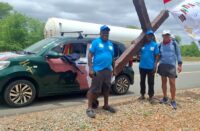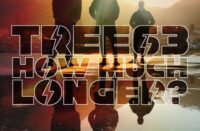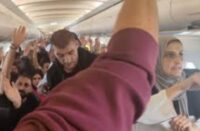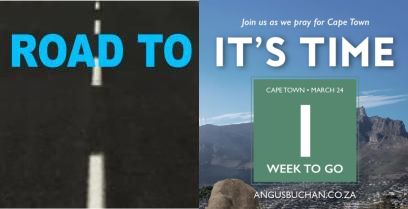
Ashley Cloete’s journey through the spiritual history of the Cape reaches modern times on the road to the It’s Time Cape Town prayer day on March 24.
Episode 4: Freedom via the Cross
Last week we looked at the special contribution of Dr Andrew Murray. The lessons learned during the Cape revival helped prepare Murray for his future role in the influential Keswick movement. Murray attended the Keswick Convention for the first time in 1882. The Keswick Convention was itself the indirect fruit of the wonderful season of awakening in England, America and South Africa.
Reverberations of the Cape revival
The revival touched at least four different continents, bringing with it a renewed faith and vision for personal holiness and the Spirit-filled life. One of Andrew Murray’s classic statements of the early twentieth century is ‘God is a God of missions”. He wrote powerfully in his booklet The Kingdom of God in South Africa (1906): “Prayer is the life of missions. Continual, believing prayer is the secret of vitality and fruitfulness in missionary work. The God of missions is the God of prayer.”
GROUND ZERO PRAYER STRATEGY
Jericho Walls International Prayer Network invites the whole of South Africa to join hands with Cape Town over 40 days as they prepare physically and spiritually for the very significant It’s Time prayer event — to cry out to God for Cape Town and the nation
A foretaste of the Rainbow Nation
Bo-Kaap and Onderkaap (the latter was later called Kanalladorp and District Six) can be regarded as the spiritual cradle of the new South Africa in many a way. It was the slaves of Bo-Kaap who started to develop the language of Afrikaans. After a distorted interpretation of Scripture had led to worldwide “White” arrogance and racial pride at the end of the 19th Century, a move for the dignity of people of colour started to take root in District Six, notably at the American Methodist Episcopal (AME) Church in Blythe Street and the Volkskerk in Gray Street. After Jews from Lithuania had joined the fray at the Cape at the end of the 19th century, District Six became truly cosmopolitan. Jews, Muslims and Christians were living harmoniously next to each other. A foretaste of the Rainbow Nation was forged.
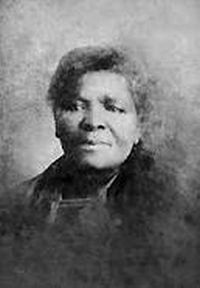
The AMEC denomination — with its origins among the Negroes of the USA — was a great propagator of the indigenisation of the church at the Cape. South Africa’s first “Black” graduate social worker Charlotte Maxeke and her South African husband Marshall who she married overseas came to the Cape where they opened a Bible School on behalf of the AMEC in 1908. This was surely of one the first instances worldwide for indigenous folk to do this. One of the persons impacted by them at the Cape was Rev Zaccheus Mahabane, who would become an influential personality in the ANC for many decades.
A hub of resistance of the oppressed
Much of the opposition to racial segregation in South Africa started in District Six. When AMEC Bishop Levi Coppin saw how the “Coloureds” were distancing themselves from the “Africans”, he thought that the ‘Coloureds’ might be the next to be segregated residentially (Blacks had been dumped in Ndabeni in 1901). He and Henry Williams, a lawyer from Trinidad, discerned all the ingredients of divide and rule when John Tobin, one of the early leaders of the African Peoples’ Organization (APO), looked for reconciliation between “Coloureds” and “White”s who also spoke Afrikaans. Tobin and his supporters were angered by what they regarded as the betrayal of the British in the run-up to the Anglo-Boer War.
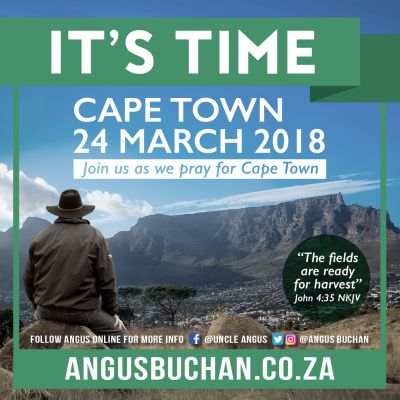
Africa for the Africans?
The slogan “Africa for the Africans” has often been branded as “Black” racism. It is hardly known that a “White” missionary from New Zealand was actually one of the first protagonists of the principle. Joseph Booth was in Cape Town in 1912-13, living from rent off boarders in his home. One of these boarders was the great DDT Jabavu.
Booth drew up an ambitious scheme which would train “Blacks” in modern skills, to give them a base for greater self-assertion. After three years of theological training in the USA and ordination in the Congregational Church, John Langalibele Dube was one of the delegation to London in 1909, to lobby against the colour bar in the Act of Union. The gifted first president of the ANC was a Zulu patriot but also an opponent of “narrow tribalism”.
A thrust started with opposition to the three “Native Bills” which spontaneously united people other than “White”. The Bills intended to remove “Blacks” from the common voters’ roll in the Cape, entrenching segregation. Pixley Seme and John Tengo Jabavu, the African National Congress (ANC) leaders, initiated the All African Convention (AAC) to challenge the discriminatory laws. District Six became the national hub of resistance in the struggle against racist oppression, the cradle of a national solution for all of South Africa and the structures and ideas upon which a truly national liberation movement came to be based.
A new fire for evangelism
Rather ambivalently, the depression of the early 1930s sparked a new fire for evangelism. The start of the Docks Mission is a case in point. When John Crowe listened to an open-air service of the Salvation Army in Adderley Street in 1932 as a young man, he was touched. Starting their outreach in the Dockyard, the Docks Mission operated from the “Tin Shanty”, a wood and iron construction. From its earliest years prayer and fasting was a custom of the Docks Mission.
Special Docks Mission prayer meetings
At the “Tin Shanty” many a Friday night was used for an all-night prayer meeting. No wonder that God gave the new denomination, the Docks Mission, phenomenal growth. On every third Saturday of the month a combined prayer meeting was held in the church at Belgravia Estate. Later it was rotated to the other branches.
Docks Mission members made a national impact through ministry to prisoners on Robben Island. Docks Mission’s Pastor Walter Ackerman thus witnessed to and challenged Nelson Mandela. (After his release in 1990, Mandela often referred to the Christian teaching that he received over the years as an important contribution to his commitment to forgiveness and refraining from revenge.)
ANC Leaders teach unity in Christ
Generations of political leaders in South Africa, particularly within the ANC, drew on Christian values for the building of a broader political unity. Coming from the African background of a broad humanity, ubuntu, there was an ethical imperative to move beyond narrow identities of family, clan and race.
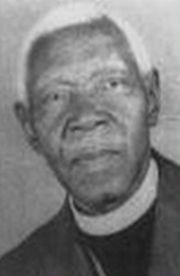
“Blacks” discerned quite early the importance of unity in Christ. One of the pioneers at the Cape was Rev Zaccheus Richard Mahabane, a Methodist minister, who was posted to Cape Town in 1916. He joined the Cape African Congress in 1917 after hearing political speeches by Charlotte Maxeke and her husband Marshall after their marriage overseas. After their return to the country the couple impacted many “Blacks” at the Cape and elsewhere.
Rev Mahabane stated in 1925 that “the universal acknowledgement of Christ as common Lord and King breaks down the social, spiritual and intellectual barriers between the races”. He propagated moderate conciliatory views of compromise. Thus he found a separate voters’ roll for “Blacks” acceptable if “Whites” found the prospect of a common roll too menacing.
Paternalism hinders the cause of the Gospel
Missionaries whose lives had been transformed through personal faith and conversion often expected that this would also happen in society at large automatically — if the Gospel would only be effectively preached. Satan hit back, when an artificial and unbiblical differentiation between Christian action and evangelistic outreach caused an ever-widening rift in the Church.
South African exponents of the “Social Gospel” embraced education, social work and politics not as replacements of evangelism, but they were sometimes accused in this way by right-wing evangelicals. The discussion was academic in part for “Blacks because, as Professor DDT Jabavu, a “Black” Christian leader, explained, “the secular-sacred dichotomy” was “foreign to their African cosmology”.
The Church in South Africa was nevertheless a major catalyst for peace and reconciliation. Successive “White” governments failed to appreciate the gold of human resources, by not listening to strong “Black” Church personalities such as Reverend John Dube and Professor Jabavu who were also ANC leaders.
Opposition to the gospel
For much of the 20th century the disunity between churches actually centred around paternalism. The ‘”White”-dominated English-speaking churches thought that the other races only needed equality of opportunity, which the “Whites” owed to the others groups. Afrikaners generally thought themselves to be called to be the guardians of the “non-White” races. The thinking of Afrikaner Christians was clearly articulated by none other than Hendrik Verwoerd, the architect of apartheid. It was his conviction that the “Black” man had to be kept in his place, i.e. in subjection and servitude. Also among missionaries full equality and total integration of all races were dragged out and postponed to a distant future.
Both “White” groups were generally unaware that they were hurting themselves by denying dignity to other races, thus seriously hindering the cause of the gospel. Somehow the teaching that unity is an instrument towards effective prayer did not penetrate into the churches.
On the other hand, this paternalism spawned resistance among the other racial groups. The All African Convention prepared the ground for the Non- European Unity Front (NEUF) and the Non-European Unity Movement (NEUM), the major opposition movements of the 1940s. Dr Abdullah Abdurahman, the leader of the APO — by securing the Schotsche Kloof flats for the accommodation of Cape Muslims — laid the foundation for the Islamic stronghold which Bo-Kaap would become in the apartheid era.
Early pros and cons of apartheid
Professor RFA Hoernlé, the founder and president of the Institute of Race Relations helped to organize the “Society of Jews and Christians”. He cleverly opposed all racist notions, defining what the “New Order” should be like: “It is clear than any new order should have to make an end of the master-race versus servant-race structure”. Completely against current trends, he went on to suggest that the franchise should be extended to “Blacks” “ultimately on the same terms on which whites possess it”/
On the other hand Geoff Cronje, one of a group of Afrikaners who studied in Nazi-time Germany, coined the term apartheid as a political concept in a book published in 1942. Apartheid was given a biblical justification in a book of essays by a prominent theologian, EP Groenewald. Apartheid as an ideology thus had a pristine link to Nazi Germany.
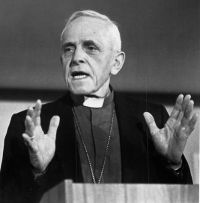
Ambivalent responses to racism
Racism became legally entrenched in 1948 when the National Party (NP) came to power. Apartheid became official in South Africa. The Anglican Bishop Trevor Huddleston and others were making some inroads through their stand against the apartheid policy and legislation.
Some of the most effective initial opposition came – quite surprisingly – from within the ranks of the Dutch Reformed denomination. Eerwaarde 1(Reverend) ID Morkel, a “Coloured” clergyman, influenced a dynamic mover, the young Eerw David Botha of the Wynberg Sendingkerk.
In due course academics from the theological sphere came on board. The brutal clampdown of apartheid enforcers harvested ambivalent responses. Deep religiosity and prayerfulness marked the Defiance Campaign which started in 1952. Chief Albert Luthuli, the great ANC leader, bequeathed an adage when he was dismissed as chief by the South African government in November 1952: “It is inevitable that in working for freedom some individuals and some families must take the lead and suffer — the road to freedom is via the Cross”.
The defiance campaigns, including bus boycotts in South Africa, served as an inspiration to civil rights activists in the United States.
In the middle of April 1953, Chief Luthuli, the president-general of the ANC, had the Defiance Campaign called off so that the resistance groups could reorganise, taking into consideration the new political climate in South Africa. Luthuli was nevertheless assaulted and tried for treason.
In the 1960s and 1970s the Apartheid rulers silenced the political opposition via bannings and other methods. Robben Island became the favoured venue for the incarceration of political convicts once again.
Rise of Islam
A spiritual power encounter on the old Green Point Track on August 13 1961 initially seemed to have given Islam a massive blow. Ahmed Deedat was a young imam at the receiving end of that encounter when a “White” lady was supernaturally healed. Ds Davie Pypers, a young Dutch Reformed clergyman of the Gestig Sendingkerk2 congregation, was used as a divine instrument.
The effect of that miracle was almost nullified by news that came from another part of the world on that same day. The report of the building of the Berlin Wall resounded throughout the world! A new type of battle was cemented — the “cold war” between Soviet Communism and Western Capitalism!
The Green Point Track event would however also usher in the rise of Islam from the proverbial ashes. Imam Deedat would thereafter almost single-handedly contribute to the rise of Islam. What was perceived as the defeat of the Muslims at Green Point inspired a call for revenge. Deedat stated publicly that the original motivation for public debates was his humiliation at the hand of Christians. He was not willing at all to accept defeat.
Deedat established the Islamic Propagation Centre in Durban, from where he staged an unprecedented onslaught on Christianity. He became a household name among Muslims around the world. Soon Muslims almost everywhere believed that the Bible had been changed and that Islam would ultimately conquer the world! Deedat was their star fighter!
Islam linked to Communism?
As the ensuing “Cold War” became the focus internationally, the arch enemy abused Communism with its atheist basis. This was tantamount to a demonic attempt to stifle the spreading of the victorious message of the Cross, as it had been proclaimed at the Green Point Track.
I surmise that the Cape event of August 13 1961 had great importance in the spiritual realm. One tends to suspect that the Islamic Crescent was subtly linked to Communism in opposition to the Cross! (This would happen again in reverse in 1990 after the demise of Communism. Islam took over the mantle from the atheist ideology as a threat to world peace when the Iraqi army marched into Kuwait. However, that event also became the catalyst for many Christians to start praying for an end to the bondage and deception at the base of the ideology of Islam as a destructive spiritual force.)
An international Open Doors prayer campaign was significantly instrumental towards the start of the demise of both ideologies.

A covert power encounter
A less conspicuous power encounter ensued in 1962 when Theo Kotze became the pastor of the Sea Point and Malmesbury Methodist congregations. Kotze was one of the first Christian Institute (CI) members at the Cape, forming an ecumenical Bible study group at their office near to the Mowbray train station, using CI material. (Dr Beyers Naudé led the Christian Institute nationally. This organisation provided the chief ideological opposition to apartheid in the 1970s and 1980s.)
Nelson Mandela and his colleagues had been on Robben Island for almost two years when the Cape Methodist Synod appointed Kotze as Robben Island chaplain. Among his Methodist congregants there were big-name political detainees like Nelson Mandela, Robert Sobukwe and Stanley Mogoba. At this time Robben Island was transformed into a special “university”. Many “graduates” would become leaders in post-Apartheid South Africa.
A result of ‘Group Areas’ legislation
After the passing of legislation by parliament in 1950 to divide residential areas along racial lines, many “Coloured” communities living around the Cape Town Central Business District were destroyed. Islam received a significant boost at the Cape through apartheid legislation.
A part of the area that was known as Bo-Kaap already had a big Cape Muslim population (In the case of the Schotsche Kloof Flats it was 100%). Bo-Kaap was declared a Muslim residential area. As a result, the suburb became a religious stronghold.
The Group Areas legislation probably contributed more to the regional spread of Islam than any other factor. The relatively slow growth of Cape Islam of the 1950s was easily eclipsed by that in the three decades following 1970. Mosques arose in the new townships of the Cape Flats where there hitherto had been very few Muslims.
On May 7, 1961 Muslims gathered in the City Hall of Cape Town to launch the Call of Islam. This umbrella body of different Muslim organisations – founded by Imam Abdullah Haron – had the aim of opposing the Group Areas Act.
In 1965 the Minister of Community Development and “Coloured” Affairs, PW Botha – who would later become Prime Minister – called District Six a “blighted area”. Talk of slum clearance started doing the rounds, setting the scene for events to follow.
On February 11 1966 District Six was declared a “White” residential area.
The oil crisis and the Islamic revolution
The oil crisis of 1973, followed by the Islamic revolution with Ayatollah Khomeini as its most prominent exponent, gave a new aggressive image to Islam. With the revenue accrued from the oil sales – while it created a lot of anxiety in the West — a wave of Islamic expansion ensued.
When one country after the other broke diplomatic relations with Israel to be in the good books of the OPEC oil-exporting countries, it was not preposterous at all to see the oil as a demonic emulation of the Holy Spirit. (Bible scholars who take typology seriously, have been seeing oil in the Bible, e.g. in the parable of the 10 virgins of Matthew 25 as a type of the Holy Spirit).
An agenda for world domination
Anne van der Bijl, a Dutchman, was a Western evangelical believer who discerned spiritual matters quite clearly. Van der Bijl – more widely known as Brother Andrew — developed a programme of smuggling of bibles in obedience to the Lord.
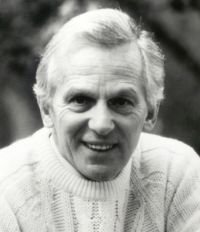
He founded Open Doors as a ministry on behalf of the persecuted church. He furthermore discerned that the two major tools of spiritual warfare – prayer and God’s Word — had to be utilised on a big scale to counter atheist Communism. He implemented this by using his organisation Open Doors to challenge Christians world-wide to pray for the demise of the Soviet Empire for seven years from 1983.
The prayer mobilisation campaign was supplemented by a gift of a million Bibles to the Russian Orthodox Church for their pending 1000th anniversary and an adventurous secret delivery of a million Bibles in China. When the Berlin Wall fell on November 9 1989 it ushered in the demise of Soviet Communism and the conversion of millions of Chinese to Christianity in the years thereafter. Subsequently the same method – this time 10 years of prayer for the Muslim world – harvested a breakthrough in the Muslim world with thousands coming to faith in Jesus in the Middle East.
The hippie revival
In the radical rejection of their parents’ way of life the hippies of the late 1960s repudiated the affluent lifestyle in which making money is the object of life and work. The Jesus Movement was the major Christian element within the hippie subculture. Members were called Jesus People or Jesus Freaks.
The movement came to Cape Town from Johannesburg in the early 1970s. Brian O’Donnell and Dave Valentine soon became the prime movers here. The Holy Spirit moved mightily among the young people, ultimately leading to the hippie revival.
The revival vibes radiated much further afield. In Grahamstown the “charismatic renewal” moved into the Anglican Church where Bishop Bill Burnett was impacted. The Holy Spirit movement flowed via a big national church event, the Congress on Mission and Evangelism with Dr Billy Graham in 1973.
Ripple effects of the hippie revival
At the Congress on Mission and Evangelism in Durban in March 1973 the racial barriers came down significantly for the first time in this country. Dr Billy Graham’s insistence on the absence of any segregation among the audience played no small role. That congress was also an important forerunner for Lausanne the following year when the evangelical-ecumenical schism was addressed, as well as the unbiblical separation of evangelism and compassionate outreach.
Bo-Kaap became a Muslim stronghold
The opposition to the Group Areas declaration of District Six reverberated until well into the 1980s. This was one of the reasons that caused the government to rescind the demolition of Bo-Kaap, which had been deceptively called the “Malay Quarter”.
By 1980, Bo-Kaap had become a Muslim stronghold with very little Christian influence left. Simultaneously the story of Ayatollah Khomeini grabbed the attention of Cape Muslims. Graffiti on a wall in Sheikh Yusuf Drive stated how the new revolutionaries viewed the way to whack apartheid: The only solution — Islamic revolution. Let us make the country ungovernable just like Ayatollah Khomeini did in Iran!
History repeating itself?
In 2018 history seemed to repeat itself. The Democratic Alliance appeared to dig their own grave by actively participating in the Gay Parade on March 24 2018. They had been party already to the promulgation of the same-sex marriage law in 2005, an abomination from a biblical point of view. The once powerful African National Congress (ANC) of Nelson Mandela legalised abortion almost with the same speed as the NP implemented apartheid. The anti-Semitic Boycott, Divestment and Sanctions (BDS) movement – led by a tiny Muslim faction — gained ground, getting the party to decide unanimously to downgrade relations with Israel. Theft of land and property got glorified with the parliamentary stamp as expropriation without compensation. Calls have come in for the legalisation of pornography – in spite of the clear link to rape, a major scourge of our country. Add to this the “politically correct” — but biblically -abominable campaign to legalise prostitution, calling it sex work. The downward spiral of good morals cannot be overlooked anymore.
Can the Church lead the country in remorse and repentance for these developments?
It’s Time Cape Town in Mitchell’s Plain is challenged to be the catalyst to call the silent Church out of its indifference, to usher in godly governance.
Next week we hope to highlight in our final episode how moves at the Cape played a significant role to turn the tide, not only on apartheid but also to some extent on the demise of the ideology of Communism and the exposure of the violent side of Islam. We will also point to various ministries that blossomed among the poor and needy, ushering in the big revival so to speak.


